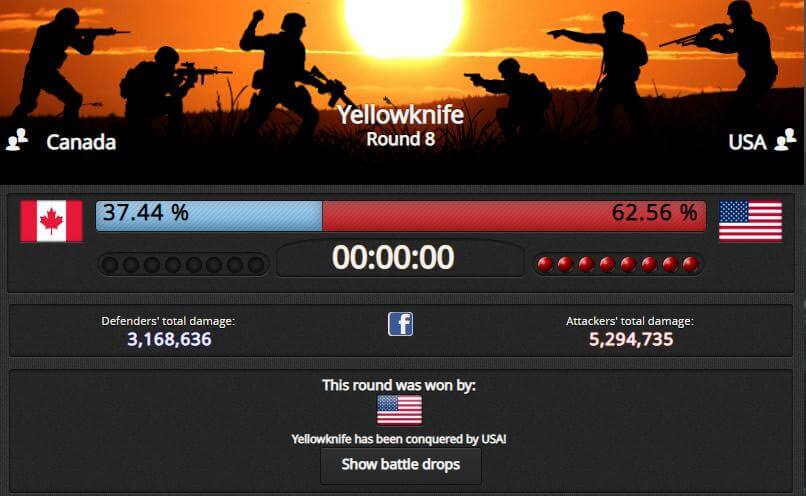Article
http://www.investopedia.com/articles/investing/022415/worlds-top-10-economies.asp
The inequitable distribution of income is present at the global level where the nominal gross domestic product (GDP) of the top ten economies adds up to 65 percent of the world’s economy, and the top 15 economies add up to 75 percent. The remaining 172 countries constitute only 25 percent of the world’s economy.
Here’s the list of the top ten economies based on the criteria of GDP, current prices (US dollars) which is simply known as nominal GDP. The rankings differ if the same list is prepared using the GDP based on purchasing-power-parity (PPP). As a general rule, developed countries have a smaller gap between their nominal GDP (i.e., current prices) and GDP based on PPP, while the difference is greater in developing countries, which tend to have a higher GDP when valued on purchasing-power-parity basis. (For more, see: The GDP And Its Importance.)
1. United States
The US economy is the largest economy in the world in terms of nominal GDP (measured at current prices in US dollars). The $17.41 trillion US economy is approximately 22.44 percent of the gross world product. The United States is an economic superpower that is highly advanced in terms of technology and infrastructure and has abundant natural resources. However, the US economy loses its spot as the Number One economy by a slight margin to China when measured in terms of GDP based on PPP. In these terms, China’s GDP is $17.63 trillion and the US GDP is $17.41 trillion. However, the US is way ahead of China in terms of GDP per capita (PPP)-- approximately $54,678 in the US versus $12,893 in China.
2. China
China has transformed itself from a centrally planned closed economy in the 1970’s to a manufacturing and exporting hub over the years. The Chinese economy is propelled by an equal contribution from manufacturing and services (45 percent each, approximately) with a 10 percent contribution by the agricultural sector. The Chinese economy overtook the US economy in terms of GDP based on PPP. However, the difference between the economies in terms of nominal GDP remains large. China is currently a $10.35 trillion economy and has been growing at around seven percent in the recent years. (Related reading, see: Why China Is "The World's Factory."
3. Japan
Japan’s economy ranks third in terms of nominal GDP while it slips to fourth spot when comparing the GDP by purchasing-power-parity. The economy has been facing hard times since the 2008, when it was first showed recessionary symptoms. Though the government’s stimulus packages have helped the economy recover a bit, the massive earthquake in 2011 gave the fragile economy another jolt. Economic growth has hovered between 0.5–2 percent in recent times. The nominal GDP of Japan is $4.77 trillion, its GDP (PPP) is $4.78 trillion, and its GDP (PPP) per capita is $37,683.
4. Germany
Germany is Europe’s largest and strongest economy. On the world scale, it ranks as the fourth largest economy in terms of nominal GDP. Germany’s economy is known for its exports of machinery, vehicles, household equipment, and chemicals. Germany has a skilled labor force, but the economy faces demographic challenges like most European nations. The size of its nominal GDP is $3.82 trillion, while its GDP in terms of purchasing-power-parity is $3.62 trillion. Germany’s GDP (PPP) per capita is $44,741, and the economy has moved at a moderate pace of 1-2 percent in recent years.
5. France
France, the most visited country in the world is the fifth largest economy in the world with a nominal GDP of $2.9 trillion. Its GDP in terms of PPP is around $2.59 trillion. France has a low poverty rate and high standard of living, which is reflected in its GDP (PPP) per capita of $40,445. The country is among the top exporters and importers in the world. France has experienced a slowdown over the past few years and the government is under immense pressure to rekindle the economy, as well as to combat the rising unemployment.
6. United Kingdom
The United Kingdom with a $ 2.85 trillion GDP is the world’s sixth largest and Europe’s third largest economy. The economy of UK is primarily driven by services, as the sector contributes more than 75 percent of the GDP. With agriculture contributing a minimal one percent, manufacturing is the second most important contributor to GDP. Although agriculture is not a major contributor to GDP, the country produces 60 percent of its food needs domestically by employing less than two percent of its labor force. The economy in terms of GDP purchasing-power-parity stands at $2.43 trillion with a GDP (PPP) per capita of $37,744.
7. Brazil
Brazil with its $2.24 trillion economy, it is the seventh largest economy by nominal GDP. The Brazilian economy is has developed services, manufacturing, and agricultural sectors with each sector contributing around 68 percent, 26 percent, and six percent respectively. Brazil is a part of BRIC and ahead of all other South American economies. The Brazilian GDP measured in purchasing-power-parity is $3.07 trillion, while its GDP per capita (PPP) is $15,153. However, the country has 21 percent of its population living below the poverty line. (Related reading, see: Top Brazilian Stocks For US Investors.)
8. Italy
Italy’s $2.13 trillion economy is the world’s eighth largest in terms of nominal GDP. Italy is among the prominent economies of the eurozone, but it has been impacted by the crisis in the region. The economy suffers from a huge public debt estimated to be about 133 percent of GDP, according to the CIA World Factbook. The economy is also facing high unemployment and deteriorating economic growth. The government is working on various measures to boost the economy that has contracted in recent years. The GDP measured in purchasing-power-parity for the economy is estimated at $2.06 trillion, while its per capita GDP (PPP) is $34,455.
9. Russia
Russia’s domestic consumption amid a politically stable atmosphere has paved the way for economic growth in the country. The country has transformed itself since the fall of the Soviet Union in 1991 from a centrally planned economy to a more market-based open economy. Russia’s $2.05 trillion economy is currently facing a crisis as a result of imposed sanctions and a steep fall in oil prices. Russia’s economy in terms of purchasing-power-parity is estimated at $3.56 trillion, while its GDP per capita is $24,764. (Related reading, see: Sanctions & Oil Prices Bring The Russian Economy Near Collapse.)
10. India
India ranks third in GDP in terms of purchasing-power-parity ($7.28 trillion), while its nominal GDP ($2.04 trillion) places it in the tenth spot. The country’s high population drags its GDP (PPP) per capita down to $5,778. India’s GDP is still dependent on agriculture (17 percent), compared to western countries. However, the services sector has picked up in recent years and now accounts for 57 percent of the GDP, while industry contributes 26 percent. The economy’s strength lies in a limited dependence on exports, high saving rates, favorable demographics, and a rising middle class. (Related reading, see: Should India Be On Investors' Radars?)
Read more: The World's Top 10 Economies | Investopedia http://www.investopedia.com/articles/investing/022415/worlds-top-10-economies.asp#ixzz3zgA7YXjf
Follow us: Investopedia on Facebook
Previous article:
World War III inches closer as Turkey says it may enter Syrian conflict (9 years ago)
Next article:
It's Winter DUDE (9 years ago)
About the game:

USA as a world power? In E-Sim it is possible!
In E-Sim we have a huge, living world, which is a mirror copy of the Earth. Well, maybe not completely mirrored, because the balance of power in this virtual world looks a bit different than in real life. In E-Sim, USA does not have to be a world superpower, It can be efficiently managed as a much smaller country that has entrepreneurial citizens that support it's foundation. Everything depends on the players themselves and how they decide to shape the political map of the game.
Work for the good of your country and see it rise to an empire.
Activities in this game are divided into several modules. First is the economy as a citizen in a country of your choice you must work to earn money, which you will get to spend for example, on food or purchase of weapons which are critical for your progress as a fighter. You will work in either private companies which are owned by players or government companies which are owned by the state. After progressing in the game you will finally get the opportunity to set up your own business and hire other players. If it prospers, we can even change it into a joint-stock company and enter the stock market and get even more money in this way.

In E-Sim, international wars are nothing out of the ordinary.
Become an influential politician.
The second module is a politics. Just like in real life politics in E-Sim are an extremely powerful tool that can be used for your own purposes. From time to time there are elections in the game in which you will not only vote, but also have the ability to run for the head of the party you're in. You can also apply for congress, where once elected you will be given the right to vote on laws proposed by your fellow congress members or your president and propose laws yourself. Voting on laws is important for your country as it can shape the lives of those around you. You can also try to become the head of a given party, and even take part in presidential elections and decide on the shape of the foreign policy of a given state (for example, who to declare war on). Career in politics is obviously not easy and in order to succeed in it, you have to have a good plan and compete for the votes of voters.

You can go bankrupt or become a rich man while playing the stock market.
The international war.
The last and probably the most important module is military. In E-Sim, countries are constantly fighting each other for control over territories which in return grant them access to more valuable raw materials. For this purpose, they form alliances, they fight international wars, but they also have to deal with, for example, uprisings in conquered countries or civil wars, which may explode on their territory. You can also take part in these clashes, although you are also given the opportunity to lead a life as a pacifist who focuses on other activities in the game (for example, running a successful newspaper or selling products).

At the auction you can sell or buy your dream inventory.
E-Sim is a unique browser game. It's creators ensured realistic representation of the mechanisms present in the real world and gave all power to the players who shape the image of the virtual Earth according to their own. So come and join them and help your country achieve its full potential.

Invest, produce and sell - be an entrepreneur in E-Sim.

Take part in numerous events for the E-Sim community.
